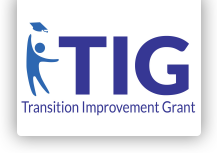
Improving Outcomes Through Planning and Implementing
Learn More
| 1. Partnerships | |||
Partnerships engage family and community transition partners and provide transition programming focused on supports and services. Youth with involved transition partners report increased post high school satisfaction and success in many areas of adult living. Predictor Categories
| |||
| 2. Interpersonal Skills | |||
Youth who demonstrate life skills through self-advocacy, social skills and community experiences while in high school report increased satisfaction in post high school living. Predictor Categories
| |||
| 3. Instructional Supports | |||
Instructional supports includes school-based programs, curriculum and inclusion in general education activities and programming. Success in these areas leads to increased outcomes in many areas of adult living. Predictor Categories
| |||
| 4. Employment Preparation | |||
Participation in employment preparation provides employment experiences and helps youth prepare for entry into employment after high school. Predictor Categories
| |||
| 5. Career Preparation | |||
Participation in activities of career preparation and occupational readiness helps prepare youth for further education and/or entry into employment. Predictor Categories
| |||




